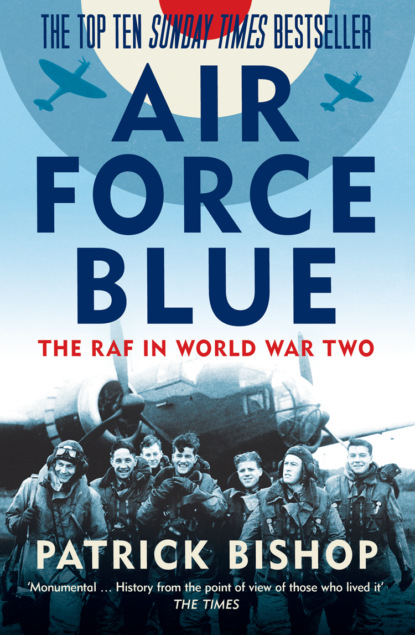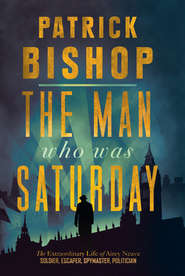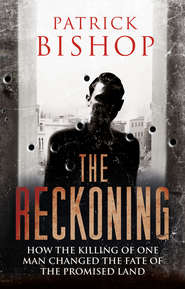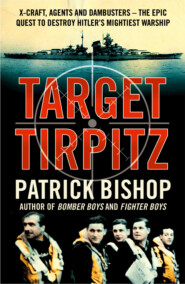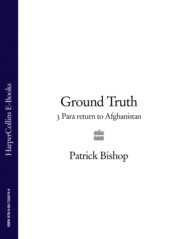По всем вопросам обращайтесь на: info@litportal.ru
(©) 2003-2024.
✖
Air Force Blue: The RAF in World War Two – Spearhead of Victory
Настройки чтения
Размер шрифта
Высота строк
Поля
A Cottage or a Castle? (#uf5591bc2-0fb0-5c25-9edc-b8498a690b9e)
One afternoon in the middle of the war Group Captain Arnold Wall sat down to tea and biscuits with Lord Trenchard, who was revered as the ‘Father of the Royal Air Force’. Wall taught at the RAF Staff College and was preparing a lecture on the early history of the service. Among the questions he had for the great man were two that were ‘pretty trivial’, but which he ‘felt personal curiosity about’.1 (#litres_trial_promo) The first was how it was that the RAF got its famous blue uniform.
There were ‘two legends about this, both picturesque’ in circulation, and he hoped Trenchard might be able to settle the matter once and for all. One claimed that in 1917 the textile mills of Bradford had received an order to weave a million yards or so of light blue cloth for the Tsar of Russia’s cavalry. After the October Revolution, this was left on their hands. Thus, when the RAF officially came into being on 1 April 1918, there was a vast stock of surplus material going cheap that suited their requirements.
In the other version, the staff officer charged with choosing the colour was the beau of a musical comedy star named Lily Elsie, famous for starring in the London version of The Merry Widow. When samples were brought to him for a decision he decided to consult his girlfriend. ‘This is it,’ she is alleged to have replied, picking out the shade that the RAF has worn ever since, ‘because it matches the colour of my eyes.’ Trenchard was ‘most apologetic’ but could throw no light on the matter.
On the second subject – the origin of the RAF ensign – he was more helpful, saying ‘Yes, yes. I can tell you something about that.’ Trenchard recalled his staff coming to him with a sketch of the design. It featured the RAF red, white and blue roundel, originally devised to deter trigger-happy Tommies from blasting at friendly aircraft from their trenches, set on a sky-blue background. They warned him, however, that the Royal College of Heralds had ruled the roundels unacceptable as they were ‘not heraldry’. Trenchard resolved to take the matter up with the King. On his next meeting with him he brought the design along and explained the difficulty. ‘Well, Trenchard,’ said George V, ‘if it wasn’t heraldry before, it will be from now on.’ And he signed the drawing there and then.
Lily Elsie (Everett Collection Inc/Alamy Stock Photo)
The ensign anecdote sounds plausible enough. Trenchard was not the man to make up a tale about his sovereign. The truth of the origin of Air Force Blue remains obscure, though gossip certainly favoured the second version. John Slessor, who went on to be one of the outstanding figures of the wartime RAF, recalled being summoned one evening in October 1918 with other senior officers to a meeting in Salisbury to discuss sending reinforcements to France where the Germans were in full retreat. Before the main business began there was some light relief. Mark Kerr, a former senior naval officer who had switched to the Air Force, was to model the first uniform. As Kerr stepped forward into the light of a reading lamp in the new rig, the audience reacted with mirth and incredulity. ‘[It] was terrible,’ Slessor recalled, ‘a nasty pale blue with a lot of gold all over it, which brought irresistibly to mind the gentleman who stands outside the cinema.’2 (#litres_trial_promo) He reported that ‘rumour had it that it was a joint design by Mark Kerr and Miss Lily Elsie, though I’m sure that this was a libel on a beautiful and talented lady who has far too good taste ever to have been party to such an atrocity. Fortunately, it was short lived …’
These foundation stories say much about how the RAF saw itself – and how it wanted others to see it – in the first years of its existence. Unpicking the Russian story – the yarn about the yarn – reveals some enduring components of the RAF image. One is an aura of romance. The Air Force was being linked to what was traditionally the most dashing arm of the military. The message was that aviators were the aerial equivalent of the cavalry, bold, colourful and brimming with elan, éclat and all the other French words that go with sabre-wielding men on horseback. But there is also a suggestion that they were the target of some resentment from their dowdier colleagues. The implication was that the authorities had decided that, rather than weave a new cloth for the new service, they would have to make do with a quartermaster’s windfall.
The second version reinforces the element of romance and introduces a raffish note. Lily Elsie was a big star of the day whose picture was plastered over mass-circulation illustrated papers. She was also married (as was Mark Kerr). Perhaps significantly, her playboy husband’s fortune came from a family business that made textile machines. Here the RAF is presented as the sort of outfit that has in its upper ranks officers who hang out with beautiful celebrities. The tale gives the impression of modernity and a devil-may-care attitude to traditional proprieties.
Without stretching things too far, the ensign anecdote also carries a subtext. In this submerged narrative, the infant service, whose values are illustrated in an attractive and innovative design, runs up against the dreary forces of tradition in the form of the heralds. But where there’s a will there’s a way and help is at hand from an unusual quarter. Young and brash the newcomers may be, but the King recognizes them for the loyal liegemen that they are. At a stroke the hindrance is removed. There will be plenty more obstacles across their path in the journey ahead, the tale implies, but they will be approached and dealt with in the same undaunted manner.
The RAF’s image developed naturally from the activities of the Royal Flying Corps in the First World War. The first task it was given was one that traditionally had been done by the cavalry – scouting the movements of the enemy. Once the front lines had solidified and trench warfare began, airmen mapped the battlefield, spotted for the artillery and clashed with enemy aviators trying to do the same thing.
At this stage they were a mere adjunct of the ground forces and did what the Army asked them to. But the nature of their activities meant they received a disproportionate amount of attention.
Aerial combat over the trenches seemed a clean, chivalrous business compared to the industrial carnage below. The isolated nature of much air fighting drew attention to individual warriors and the ‘ace’ was born. Both sides’ propaganda boosted their own airmen heroes. In Britain William Leefe-Robinson, Mick Mannock, Albert Ball and James McCudden, all VC winners, were household names. The last three died flying. Aerial combat was clearly a very dangerous business but outwardly at least the airmen displayed a cheerful fatalism: ‘Here’s a toast to the dead already’ ran a favourite song in the RFC’s well-lubricated messes, ‘three cheers for the next man to go.’
The airmen very quickly formed an identity that set them apart from soldiers and sailors. It was an attractive one, a blend of gallantry, individualism and insouciance in the face of death. The small-scale, tactical work they did was unsuited to the sort of regimented discipline that shaped the Army and Navy. They were old-fashioned warriors in modern fighting machines. These perceptions would persist long after this early ‘heroic’ age of air fighting was over.
Between 1917 and 1939 the Air Force would move from the periphery to the centre of British military thinking, planning and expenditure. The development was the result of two growth spurts, both of them brought about by fear of German air power. The Royal Air Force itself was conceived in the panicky atmosphere generated by continuing German air raids on Britain. Attacks by Zeppelins killed 500 civilians by the end of 1916 and diverted 17,000 servicemen from other duties. In the summer of 1917 long-range Gotha bombers struck London, killing and wounding nearly six hundred people in the initial raid. The fear felt on the streets spread upwards. ‘One would have thought the world was coming to an end,’ sniffed the Chief of the Imperial General Staff Sir William Robertson after attending an emergency cabinet meeting in July. ‘I could not get a word in edgeways.’3 (#litres_trial_promo)
Something had to be done. The War Cabinet appointed the South African soldier-statesman Jan Smuts to investigate. His first, short recommendations arrived quickly and focused solely on improving the air defences of the London area.
His follow-up report, delivered only a month later, went much further. From the flimsy evidence of the air raids, Smuts drew a vision of the future. He was now convinced that there was ‘absolutely no limit’ to the use to which aeroplanes could be put. ‘The day may not be far off,’ he predicted, ‘when aerial operations with their devastation of enemy lands and destruction of industrial and populous centres on a vast scale may become the principal operations of war, to which the older forms of military and naval operations may become secondary and subordinate.’4 (#litres_trial_promo)
This was quite a claim to advance on the basis of a few air raids. By making it, Smuts set a pattern for extravagant extrapolations, unsupported by serious data, of what air power might do that persisted through the years ahead and which profoundly shaped the development and condition of the Royal Air Force as it prepared for the next big war.
His prophecy was followed by an equally momentous proposal. He recommended that henceforth the RFC and its maritime equivalent, the Royal Naval Air Service, should no longer be tied strictly to the tactical needs of the Army and Navy and the two should be amalgamated in a single Air Force under the political control of a new Air Ministry. The Smuts plan was adopted and implemented with a speed that was remarkable even in wartime. The Royal Air Force came into being on 1 April 1918, the first – and for some years the only – independent air service in the world.
The original set-up was makeshift. The Air Ministry was initially sited in the Cecil Hotel, a second-class establishment in the Strand, before moving to a Portland stone block at No. 1 Kingsway, named Adastral House after the wonderful motto the RAF had inherited from the RFC – Per Ardua ad Astra. But the first great leap had been made and the airmen had their chance at reaching for the stars.
In less than four years the status of airmen had soared. Initially the lackeys of the traditional services they were now their nominal equals. The grant of independence had come out of nowhere. No one serving in the air had asked for it. Indeed, there were some in the RFC, including initially Trenchard himself, who were sceptical of the value of a third service, though it did not take him long to change his mind.
The airmen had been handed independence on a plate. They soon learned they would have to fight to keep it. The Army and Navy saw the measure as a temporary aberration. Once the flap was over and the war won, they set about trying to kill off the upstart and claw back control of their air assets.
The fight for survival that ensued had a profound effect on the fundamental character and outlook of the RAF. From birth it was forced to develop theories and practices that justified its existence and techniques for fending off a predatory Army and Navy, both operating from positions of massive institutional strength.
The Navy was particularly persistent. The Admiralty had a solid claim that as the Fleet was central to Britain’s defences, anything connected to it should come under its control. The creation of the Fleet Air Arm in 1924 still left naval aviation in the hands of the RAF and it was not until May 1939 that the Admiralty won it back. The Army felt that it had not been properly compensated for the loss of the RFC and senior officers complained constantly that the RAF showed no interest in providing for its legitimate needs. The belief that the Air Force was primarily out for itself ran deep in the traditional services. It was true that the RAF fought its corner hard in the early years of its existence, but self-interest was essential for self-preservation.
Mutual suspicion and misunderstanding, breaking occasionally into open bureaucratic warfare, placed a heavy strain on relations between the services that would last into the early years of the next war, hampering Britain’s ability to fight it.
The RAF had to tread carefully in the post-war atmosphere of military cost-cutting that slashed budgets to the bone, a general loathing of war and a deep reluctance to contemplate the dreadful thought that Britain might one day have to fight another one. The newcomers were last in the queue for resources. Even getting kitted out in the new blue uniforms was a struggle. The Royal Army Clothing Department which dealt initially with supply, appeared unwilling to accept the change. ‘Without presuming to criticize the decision of the Air Council, I venture to submit to you the following considerations,’ wrote its director, General Sir Benjamin Johnson, in July 1918.5 (#litres_trial_promo) He went on to urge them to make sure they were happy with their choice as ‘nothing could be worse for the prestige of the Air Service than the adoption of a colour which it might be found faded, went shabby or showed dirt and dust marks easily’. Eight years after the birth, the Treasury were still complaining that they had not been consulted about the clothing costs (which admittedly came to about £1.5 million).6 (#litres_trial_promo)
In the face of this resentment and a government which begrudged every shilling of military expenditure, the RAF needed outstanding leadership to keep it on its feet. It was provided by Hugh Trenchard who, as Chief of the Air Staff, was the professional head of the RAF for eleven of the first twelve years of its life. ‘Boom’ Trenchard dominates the story of the early days, simultaneously forbidding and benign, the patriarchal figure of the foundation myth. He claimed to dislike being referred to as the ‘Father of the RAF’ but had no difficulty accepting all the other accolades that would be heaped upon him over the years. Trenchard was a failure until he was forty. He was born in 1873, the son of a soldier turned failed West Country solicitor and a mother whose father had been a naval officer. He was supposed to join the Navy but flunked the entrance exam to Dartmouth then twice failed to pass muster for the Army academy at Woolwich. He finally scraped into the Royal Scots Fusiliers and spent the next nineteen years in India and Africa.
His career was going nowhere when in 1912, inspired by a letter from a brother officer describing ecstatically his experiences with the newly formed Royal Flying Corps at their aviation school on Salisbury Plain, he decided to try it for himself. He was immediately entranced – not with flying for he was too big and clumsy to be a good pilot – but with the opportunities it offered, for the military and for himself. Qualities the Army overlooked were appreciated in the RFC and promotions came rapidly. Three years later he was officer commanding in France.
Trenchard inspired something close to adulation among the generation of officers who led the RAF into the war and his thinking pervaded their outlook. Even after he was long gone from office, his protégé Arthur Tedder, who, as deputy to the Supreme Allied Commander in Europe, Dwight D. Eisenhower, was one of the busiest men in the world, still found time during the 1944 invasion to write to the old man asking for his advice.
He was seen to possess a quality that was not obvious in any other military figure of the time. ‘There are some rare people in whose presence one instinctively and immediately feels: here is a really great man,’ declared ‘Jack’ Slessor who first met him when a young RFC officer in France.7 (#litres_trial_promo) ‘I felt it [then] … and I have felt the same about him ever since. It is difficult to define that quality of real greatness. Self-confidence without a trace of arrogance, a contemptuous yet not intolerant disregard for anything mean or petty; the capacity to shuffle aside non-essentials and put an unerring finger on the real core of a problem or the true quality of a man, a sort of instinct for the really important point; a selfless devotion to the cause of what he believed to be true or right.’
Those who served with him felt they had been gilded by the association. ‘I’m one of the Boom boys,’ boasted Air Marshal Sir Hugh Walmsley in later life. ‘He put the fear of God into me but by God I loved him.’8 (#litres_trial_promo) He even managed to be a hero to his valet. The humorous, intelligent Maurice Baring, who as his adjutant saw him at very close quarters in the First World War, thought him ‘one of the few big men of the world’.9 (#litres_trial_promo)
Trenchard had many failings. He could be bombastic, dogmatic and often got things badly wrong. He shamelessly interfered in Air Force matters long after leaving office, with the result that ‘all his successors up to the end of the war had to cope with his promptings and criticisms’.10 (#litres_trial_promo) And despite his military disdain for civilian manoeuvrings, he could intrigue as enthusiastically as any grubby politician if he thought the cause was worth it.
In many ways, though, his reputation is deserved. He was a formidable operator in the corridors of Whitehall, forceful with officials but knowing when to bend, and showed a subtle understanding of political realities, tending to tell his masters what they wanted to hear. His methods intensified friction with the other services, but they worked. The historian Malcolm Smith, who took a sceptical view of the great man, nonetheless concluded that ‘Trenchard’s extraordinary personality was, without doubt, one of the greatest assets of the RAF in its fight for survival … when it was likely to have been wound up, if the other services had had their way’.11 (#litres_trial_promo)
His claims to greatness went further than that. He devised the institutions and established the traditions that enabled the Air Force to merge quickly into Britain’s institutional landscape. He oversaw the development of the strategic theory that – rightly or wrongly – placed offensive air power at the centre of Britain’s defence arrangements. Above all, he gave the RAF its identity, its self-belief and its credo, which was implanted in the DNA of the service in the years after the Great War by a cohort of disciples, suffusing the RAF ‘with a vigour and aggression, a mixture of dogmatism and iconoclasm, characteristic of the Father of the Royal Air Force’ himself.12 (#litres_trial_promo)
Trenchard initially stuck loyally to the Army chiefs’ view that aeroplanes should be strictly subordinated to their own terrestrial needs. He began to change his mind after being given command of the ‘Independent Force’, which emerged from the deliberations of the Smuts inquiry. Its purpose was to give the Germans a taste of their own medicine by launching air raids into enemy territory to attack war industries. The campaign achieved little apart from killing German civilians but the notion of using aircraft to pursue strategic rather than simply tactical war aims was planted. Trenchard would end up the most energetic and effective preacher of the primacy of air power in future conflicts and the need to place an offensive air policy at the centre of all planning, organization and procurement.
Trenchard was a notoriously bad speaker but he had a physique and presence that more than made up for his inarticulacy. No one who met him forgot the experience. Many did meet him, for he clung to his baby long after his guardianship was ended, and he pops up often in memoirs and diaries, carrying out inspections and delivering pep talks, indulged by his old protégés who were reluctant to suggest his visitations might be inconvenient.
Arnold Wall, the officer who quizzed Trenchard about the origins of Air Force Blue, remembered a freezing day in December 1926 when he came to the RAF College at Cranwell to inspect the passing-out parade. Even at this early stage Trenchard’s stature was immense. Wall, a young New Zealander in his first term as a cadet, noted every detail as he passed by. His first impression ‘was of bigness. He was a tall man, heavily built, bearishly, this accentuated by his great-coat, his head seeming on the small side for a man of his size. Heavy eyebrows, shaggy; eyes deep set and rather close set, very keen in expression but friendly; greying moustache worn rather more heavily than was fashionable. His whole bearing was kindly and interested; an amiable Great Bear.’13 (#litres_trial_promo)
The parade trooped into the gymnasium for prize giving and speeches. All the cadets knew that Trenchard’s nickname was ‘Boom’ on account of his penetrating voice. They ‘were curious to discover whether he would speak to us in the voice of a howitzer, but in this he was a disappointment. He was gruff, certainly, and loud and clear but not a boomer …’
Early in 1929 Wall went to RAF Uxbridge to hear Trenchard, who was stepping down as Chief of the Air Staff (CAS), deliver a farewell speech. ‘I don’t remember much of what he said, but one of the metaphors sticks in the mind,’ he wrote. ‘He stressed that all he and his contemporaries had been able to do since the RAF was formed was to lay “foundations (long pause), foundations for the future (pause). For you fellows to build on (pause). Could be a cottage, could be a castle. I don’t know (pause). Nobody knows. Whichever it is, hope you’ll find that the foundations are sound, strong …”’
Laying a ‘sound framework on which to build the service’ had been one of Trenchard’s main aims when he resumed the post of CAS in the spring of 1919 (a brief earlier stint had ended in his resignation after repeated clashes with the Air Minister, Lord Rothermere). The other was to find a role for the RAF that would justify its existence. Unlike his predecessor and rival Frederick Sykes, he understood the need for modesty and frugality. He came up with a proposal for how an Air Force, now pared down to a tenth of the size it had attained by the end of the war, could be employed in a way that projected military power effectively and cheaply.
The concept was called ‘force substitution’. It meant simply that instead of relying on expensive ground forces to keep down rebellious natives in hot and dusty corners of the empire, the RAF could do the job by deploying a few aeroplanes. Inevitably, the idea raised Army hackles. The new boys were seeking to take over work that had previously been done by soldiers. Winston Churchill, who was both War and Air Minister, backed the idea, however, and henceforth the RAF would be engaged heavily in imperial policing.
The first success came early in 1920 when they crushed an uprising by the Dervish leader Mohammed Abdullah Hassan in Somaliland. The ‘Mad Mullah’ was defeated in a few weeks at a cost of £77,000 – ‘the cheapest war in history’ it was said.14 (#litres_trial_promo)
In one year, 1929, the RAF was in action in Iraq, Aden, Sudan, and the North-West Frontier. Its achievements were vaunted by the Air Minister Samuel Hoare in the House of Commons. In Iraq, it was ‘the encroachment of certain tribes many miles over the Iraq frontier and the butchery of large numbers of men, women and children’ that triggered operations. In Aden, it was ‘the kidnapping of two sheikhs friendly to Britain’. In Sudan, it was ‘the murder of a British Commissioner, a Greek trader and several natives’. The results were very satisfactory. ‘The operations were carried out successfully with scarcely any casualties amongst either the Air Force or the native population,’ Hoare reported. As a result of all this activity the RAF lost only one man. As for cost, the Aden mission came to £8,000, where ‘under the older conditions of warfare the expenditure would have run into perhaps £6 millions’.15 (#litres_trial_promo)
These operations were of little use in preparing aircrews for modern warfare. Few of the tribesmen they subdued had ever seen an aeroplane, let alone had the means to shoot one down. Nor did they provide much practice in Army–Air Force co-operation. They did, however, have the beneficial effect from the airmen’s point of view of keeping the RAF firmly in the public eye and in the minds of politicians.
At home Trenchard was anxious to establish and build up an institutional framework that would consolidate the Royal Air Force’s independence forever. He set out to form a new generation of officers and airmen by training them from the outset in Air Force thought and method.16 (#litres_trial_promo) Cranwell – the first air academy in history – opened in February 1920. Alongside it was established the School of Technical Training to provide a pool of skilled ground crews.
The first Cranwell cadets were housed in a hutted camp formerly occupied by the RNAS planted on the windswept plain of south Lincolnshire. In time it would grow into a grand establishment that could hold its own with Sandhurst or Dartmouth. In October 1934, the Prince of Wales opened the new College Hall. The architect Sir James Wood had chosen the Royal Hospital in Chelsea, home to Army pensioners since 1692, for inspiration. The structure was a gigantic metaphor for Trenchard’s approach. The brick and stone elevations and large dome looked as if they had been there for centuries. In fact, the classical exterior was all façade and the building was held up by thoroughly modern steel beams.
Cranwell graduates were, as the founder intended, a small and exclusive clique, ‘the very heart and centre from which the RAF derives her vitality’, as an inter-war Air Secretary Lord Londonderry described it.17 (#litres_trial_promo) This was the nucleus around which the service would grow. Trenchard made the ability to fly an aeroplane well a basic condition of entry to the RAF’s future elite. As well as being a flying school, the college taught aviation technology and aeronautics alongside a basic academic curriculum. The course lasted two years and at the end the graduates passed out as ‘General Duties Officers’ ready to take their place wherever the service required them and in time to rise to the summit of the RAF.
There were two entries a year, and in the period between the wars the total number of annual entrants never exceeded seventy-one.18 (#litres_trial_promo) Entrance was by competitive examination, the same one sat by candidates for Dartmouth and Sandhurst, followed by interview. The college preferred candidates who came towards the top of the list (Sandhurst was prepared to consider anyone in the first hundred).19 (#litres_trial_promo) Before the college opened an Air Ministry Committee under Lord Hugh Cecil was set up to consider what sort of boy they were looking for. It concluded that RAF officers required a higher technical ability than was needed in the Army. As to character, they were seeking those with ‘the quality of a gentleman’.20 (#litres_trial_promo) By this they did not mean ‘a particular degree of wealth or a particular social position but a certain character’. This sounded egalitarian, a statement that the RAF was a modern service in tune with the democratic mood of the age. The problem was, as the Cecil report admitted, how to find candidates with the required education and qualities ‘without excluding from the service men of small and humble means’.
Cranwell cost money – a hundred pounds a term, which was the same as the fees to a good public school. Parents also had to find another hundred pounds for uniform and books. This was far beyond the means of most British households. Six full scholarships worth £105 were awarded each year. But even if a grammar school boy’s parents could scrape the funds together he was still at a disadvantage. Many public schools had separate, specialized curricula for boys trying for Sandhurst and Dartmouth and it was easy for them to extend the service to Cranwell aspirants.
In practice then, the selection process and entry requirements meant Cranwell was dominated by the sons of the affluent middle and upper classes and the products of the public school system. Of the 929 schoolboy entrants who passed through between 1920 and 1939, all but ninety-three went to fee-paying schools.21 (#litres_trial_promo) The public schools represented at Cranwell ranged from Eton, which sent twenty cadets, to small, long-vanished colleges for the sons of the shabby genteel, which sent one or two. The biggest block came from the Victorian foundations which sprang up in the nineteenth century to raise the soldiers, sailors and administrators needed to run Britain and its empire. Wellington, built as a national monument to the Iron Duke, provided the most with fifty. Other schools with strong military traditions were well represented. Cheltenham sent twenty-eight, Tonbridge and Imperial Service College twenty-two, and Marlborough and Haileybury twenty. Of military-minded schools, only Harrow, with five entrants, was under-represented.





